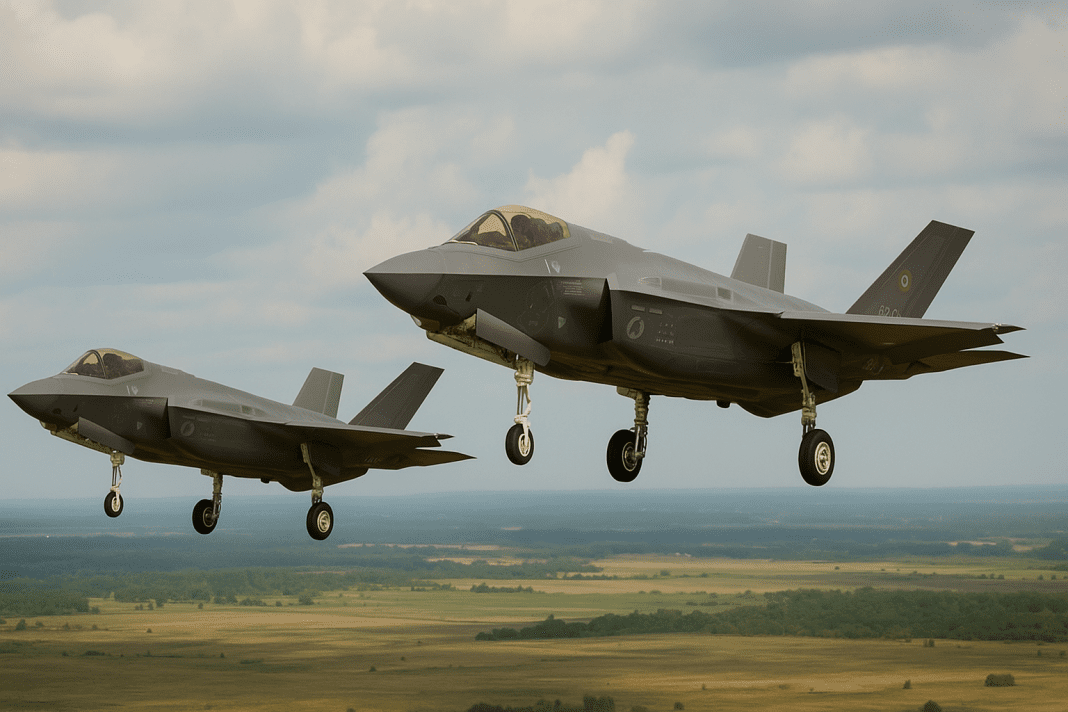To intercept Russian aircraft, Italian Air Force F-35 Lightning II fighter fighters launched for the first time from Estonia’s Ämari Air Base. This was part of NATO’s ongoing air policing mission, which is designed to protect the airspace of its member countries at all times. The mission in the Baltic is a continuous operation to watch over the skies and respond to any unauthorized intrusions.
Historic First Flight From Ämari Air Base
The occasion represents an important operational turning point for Italy’s regional involvement. The F-35s, among the most advanced fighter jets in the world, were on quick alert status. This means they were ready to take off within seconds of receiving the order. This ability to react instantly is vital for NATO’s defensive readiness, especially in areas close to borders where military aircraft from non-NATO nations are active.
Ämari Air Base is located in northern Estonia, making it strategically important for NATO’s mission in northeastern Europe. From this location, allied aircraft can quickly reach critical points in the airspace, providing fast interception capability whenever needed. The base regularly hosts fighter jets from various NATO members, making it a central hub for Baltic air policing duties.
Italy Restores Anti-Submarine Warfare Capability and Invests in F-35s
How NATO Air Policing Works From Ämari Air Base
The goal of NATO’s air policing role is to protect all member countries’ airspace through a coordinated defensive effort. It is not about attacking but about responding to potential airspace violations. Fighter jets are kept ready to launch at a moment’s notice from bases such as Ämari Air Base in Estonia and Šiauliai in Lithuania. The system is supported by a network of advanced radars, air traffic control centers, and command facilities, which together ensure 24/7 monitoring.
When radar detects an unidentified aircraft approaching or entering NATO-controlled airspace, a quick reaction alert is triggered. Fighter planes are launched in response to this signal in order to intercept the aircraft. Once in the air, the pilots identify the intruder visually and communicate with it according to established protocols. These steps help determine if the aircraft poses any risk or if it simply strayed off course.
🇨🇭 Swiss outrage erupts as Trump slaps record 39% tariffs, shaking F-35 jet deal
Not every NATO member has an air defense aircraft of their own. The Baltic States—Estonia, Latvia, and Lithuania—as well as Luxembourg, Slovenia, and Albania rely on allies to protect their airspace. NATO ensures that these nations receive the same level of protection as those with their own air forces.
In the Baltic region, the mission is especially important because the area shares borders with non-NATO countries. This means the airspace here can see more frequent activity from military aircraft belonging to nations outside the Alliance. Allied air forces rotate their deployments to Baltic bases such as Ämari Air Base and Šiauliai. This rotation system ensures that the mission remains effective and that the responsibility is shared fairly among NATO members.
Joint Training and Regional Cooperation
To keep forces ready for real-world missions, NATO organizes regular joint exercises. One of the most important series of drills is called Ramstein Alloy. The Estonian, Latvian, and Lithuanian air forces are participating in this training along with NATO allies.
During these exercises, pilots simulate scenarios that they might encounter during actual air policing missions. This includes taking off from bases like Ämari Air Base on short notice, approaching and intercepting an unknown aircraft, making radio contact, and safely guiding the aircraft away or back to its planned route. These simulations are carried out in realistic conditions to prepare pilots for any situation.
Such training is not only about skills but also about cooperation. NATO missions rely on forces from many different countries working together as one. This means pilots, ground crews, and command centers need to operate under shared procedures, ensuring smooth coordination during an actual interception.
💣 NATO rift widens—France and Italy snub U.S. weapons deal amid Ukraine crisis
For the Baltic States, these operations are a clear demonstration of NATO’s commitment to their defense. For Italy, the mission offers valuable operational experience in a different environment from their usual home bases. The recent interception by Italian F-35s from Ämari Air Base highlights just how well this cooperation works in practice. It also shows the readiness of NATO forces to respond quickly and professionally to any airspace activity requiring attention.
By combining advanced technology, constant surveillance, and multinational teamwork, NATO’s air policing ensures that the skies over its member nations remain secure. The Italian F-35s’ first interception from Ämari Air Base adds a new chapter to the mission’s long history of protecting Europe’s airspace.

